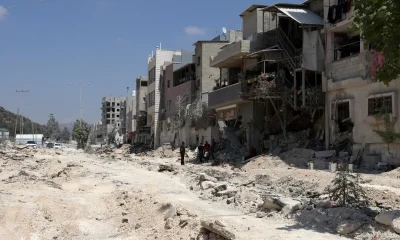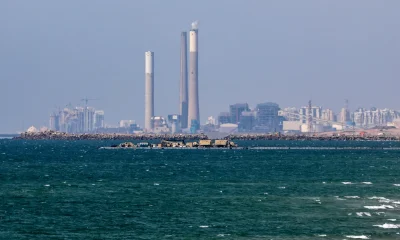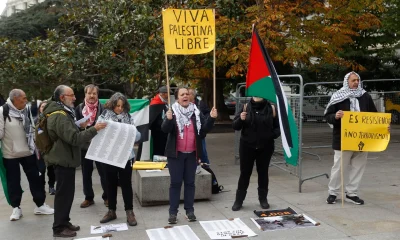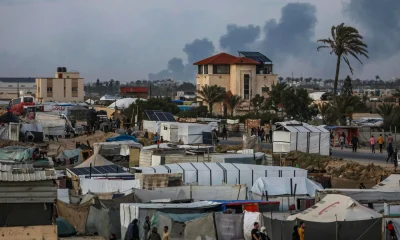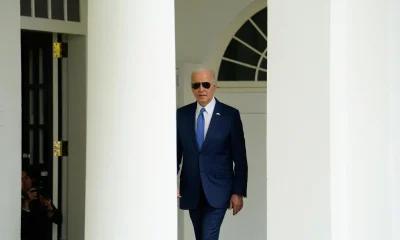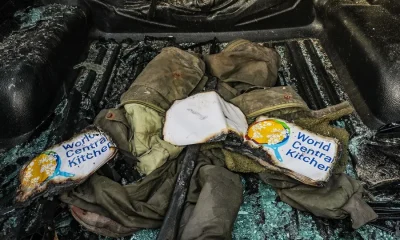International
The first shipment of food by sea to Gaza is going as planned, according to NGOs
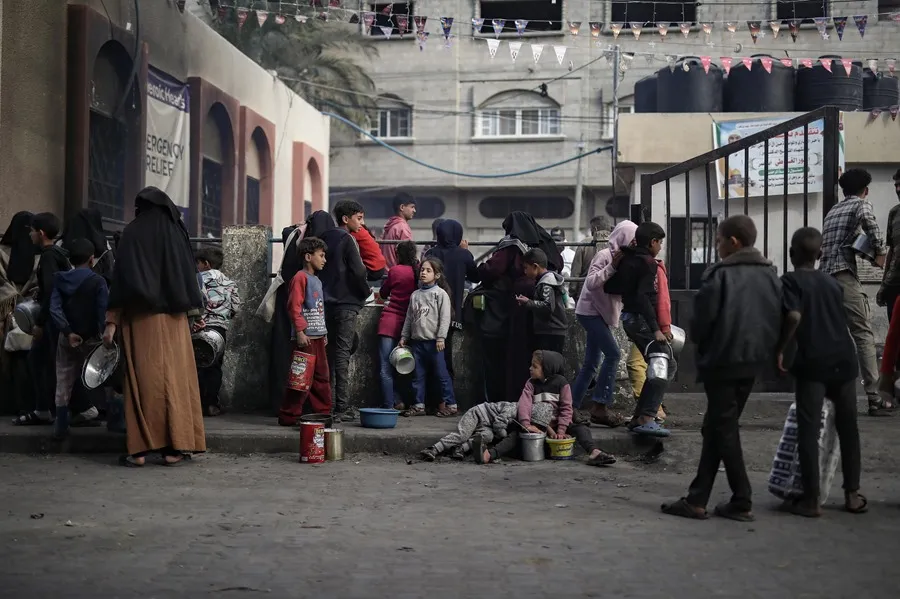
The first shipment of humanitarian aid by sea to Gaza is going as planned and the spis to disembark on the coast of the Strip will be ready when it reaches its destination, World Central Kitchen (WCK), one of the managers of the operation, said on Thursday.
“Our departure and sailing times will fit perfectly with our arrival and construction times of this port. Everything is going as planned,” Juan Camilo Jiménez, Response Manager of World Central Kitchen (WCK), the NGO founded by Spanish chef José Andrés, told EFE.
For security reasons, no details have been given about the crossing or the time of arrival at the Strip.
This organization, together with the Spanish NGO Open Arms, have been planning for months the opening of a humanitarian corridor by sea, which was inaugurated last Tuesday with the departure from Cyprus of a ship carrying 200 tons of food, equivalent to about 500,000 meals.
Jiménez also confirmed that a second shipment is already being prepared in the Cypriot port of Larnaca, of another 400 tons, which will leave in the coming days, with the aim of alleviating the famine caused by the blockade and Israel’s attacks on Gaza in its offensives to try to destroy the Islamist group Hamas after the terrorist massacre of last October 7.
As with the Open Arms, this second boat will unload the food on the 35-meter edor that WCK collaborators are building to make up for the lack of ports on the coast of Gaza.
However, Jiménez acknowledged that since this operation was planned, he was aware that these maritime shipments should not replace other entry routes, such as the Rafah land crossing, between Egypt and Gaza, having more capacity, air supplies or more corridors by sea.
“This is one more way and at the moment there are not enough ways to meet the demand for the needs that exist,” he said.
Regarding the distribution of food on the ground, Jiménez recalled that WCK has been working in Gaza for four months, where it has prepared 35 million meals in collaboration with staff and local communities.
Thus, to avoid crowds and problems with the arrival of aid by sea, the NGO will adapt the logistics and networks it has built in recent months, he said.
Regarding the announcement last Friday by the European Commission of the opening of a maritime corridor, the head of WCK said that he does not know what are the “mechanisms” that European governments or other countries have in place, but his NGO is willing to listen and see how it can join.
At the moment, the first shipment and the one being prepared have been coordinated with Cyprus, the United Arab Emirates and Israel.
Although there is a lot of hope that this maritime corridor will serve to alleviate the serious humanitarian needs of the Strip, its government, controlled by Hamas, has criticized the initiative because the 200 tons of food it loads “does not exceed that of one or two trucks” and also “it takes days to arrive.”
Hamas, like humanitarian agencies, insist on the need to open more land routes for the distribution of aid throughout the enclave, especially in the north, where more than 700,000 citizens are at risk of famine and 27 people, mostly babies, have already died from malnutrition and dehydration.
“The efforts to help our people are weak and remain below the minimum required in the face of the humanitarian catastrophe that afflicts,” the Gaza government lamented yesterday.
Meanwhile, after more than five months of war, hunger and bombs continue to kill people in the enclave, where the death toll amounts to 31,340 dead and 73,134 injured, in addition to about 7,000 bodies trapped under the rubble, according to the Ministry of Health.
International
Floods in Central Vietnam leave 28 dead, thousands displaced
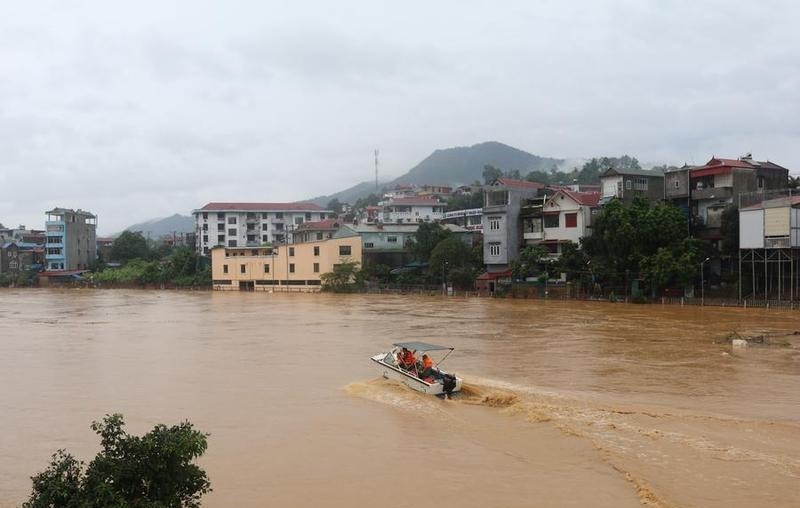
The death toll from heavy rains and flooding in central Vietnam has risen to 28, with six people reported missing and 43 injured, local newspaper VnExpress reported Friday night.
More than 22,100 homes remain flooded, primarily in the cities of Hue and Da Nang. Floods and landslides have destroyed or swept away 91 houses and damaged another 181, the report added.
Around 245,000 households are still without electricity, particularly in Da Nang, where over 225,000 homes are affected.
Additionally, 80 stretches of national highways are blocked or disrupted due to landslides. Authorities expect the flooding to continue for another day or two in the region.
International
FBI foils ISIS-Inspired attack in Michigan, arrests five teens

Kash Patel did not provide further details, but police sources told CBS News that the potential attack was “inspired” by the Islamic State (ISIS).
“This morning, the FBI thwarted a potential terrorist attack and arrested several individuals in Michigan who were allegedly planning a violent attack during the Halloween weekend,” Patel wrote on X.
“Thanks to swift action and close coordination with our local partners, a possible terrorist act was prevented before it could be carried out,” he added.
CBS reported that five people between the ages of 16 and 20 were arrested on Friday. At least one of them was reportedly acquainted with a former member of the Michigan National Guard, who was arrested in May for plotting an ISIS-inspired attack on a U.S. military facility in the Detroit suburbs.
International
U.S. warns China over Taiwan during high-level defense talks in Kuala Lumpur

U.S. Secretary of Defense Pete Hegseth expressed concerns over China’s growing military activity near Taiwan during a meeting on Friday with Chinese Defense Minister Dong Jun in Kuala Lumpur.
“It was a constructive and positive meeting,” Hegseth wrote on X. “I emphasized the importance of maintaining a balance of power in the Indo-Pacific and raised U.S. concerns about China’s actions around Taiwan,” the self-governed island that Beijing claims and does not rule out invading.
The meeting took place on the sidelines of the ASEAN Defense Ministers Meeting-Plus, one day after U.S. President Donald Trump met Chinese President Xi Jinping in Busan, South Korea. According to Trump, Taiwan was not discussed during their talks.
“The United States does not seek conflict and will continue to firmly defend its interests, ensuring it maintains the capability to do so in the region,” Hegseth added in his message.
Friday’s encounter followed a September 9 video call between Hegseth and Dong. Their previously planned meeting at the Shangri-La Dialogue in Singapore was canceled due to Dong’s absence from the event.
Trump’s sit-down with Xi — their first since 2019 — resulted in some trade agreements but avoided addressing the issue of Taiwan, a long-standing source of tension between the world’s two largest powers.
Trump has taken a more ambiguous stance on Taiwan’s future compared with former President Joe Biden, who repeatedly stated that Washington would support Taipei if China launched an invasion. The Republican president has also criticized Taiwan for “stealing” the U.S. semiconductor industry.
-

 International4 days ago
International4 days agoJamaica faces widespread destruction as hurricane Melissa hits the island
-

 International5 days ago
International5 days agoColombian president Gustavo Petro denies alleged ties to criminal networks
-
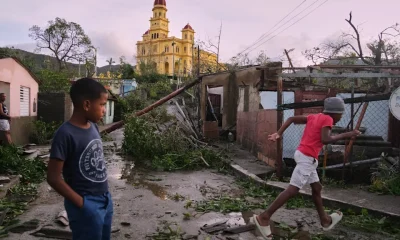
 International1 day ago
International1 day agoHurricane Melissa kills over 30, leaves thousands displaced in the Caribbean
-

 International3 days ago
International3 days agoMelissa leaves path of destruction in Caribbean, 735,000 evacuated in Cuba
-

 International5 days ago
International5 days agoMexican journalist reporting on drug cartels killed in Durango
-

 Central America4 days ago
Central America4 days agoNew dismembered bodies found in San Juan river days after mass killing in Palencia
-

 Central America4 days ago
Central America4 days agoFour guatemalan soldiers arrested for stealing weapons from Northern Air Command
-
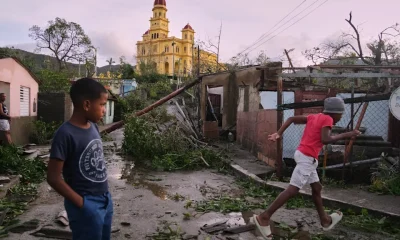
 International2 days ago
International2 days agoHurricane Melissa leaves Jamaican residents homeless as recovery efforts begin
-

 Central America4 days ago
Central America4 days agoArévalo accuses Porras and judge of undermining democracy in Guatemala
-

 Central America5 days ago
Central America5 days agoEl Salvador cracks down on narcotics: 24 tons confiscated in major anti-drug operation
-

 International3 days ago
International3 days agoArgentina’s Milei opens dialogue with parties to push “Second-Generation Reforms”
-

 International2 days ago
International2 days agoUS Deputy Secretary criticizes Mexico’s call to end Cuba trade embargo at UN
-

 International2 days ago
International2 days agoVenezuela warns citizens who call for invasion risk losing nationality
-

 Central America5 days ago
Central America5 days agoEl Salvador’s FGR prosecutes 89,875 gang members under state of exception
-

 International2 days ago
International2 days agoBrazilian president defends coordinated anti-drug operations after deadly Rio raid
-

 International2 days ago
International2 days agoTrump orders immediate U.S. nuclear testing, ending 30-year moratorium
-

 International1 day ago
International1 day agoU.S. considering airstrikes on military sites in Venezuela, reports say
-

 International1 day ago
International1 day agoTrump sets historic low refugee cap at 7,500, prioritizes white South Africans
-

 International2 days ago
International2 days agoMexico advances continental shelf claims at UN Commission in New York
-

 International1 day ago
International1 day agoU.S. warns China over Taiwan during high-level defense talks in Kuala Lumpur
-

 International2 days ago
International2 days agoSimeón Pérez Marroquín, ‘El Viejo,’ detained for role in Miguel Uribe Turbay assassination plot
-

 International1 day ago
International1 day agoUNICEF: Over 700,000 children affected by Hurricane Melissa in the Caribbean
-

 International1 day ago
International1 day agoPope Leo XIV revives Global Compact on Education to confront cultural crisis
-

 International6 hours ago
International6 hours agoFloods in Central Vietnam leave 28 dead, thousands displaced
-

 International6 hours ago
International6 hours agoFBI foils ISIS-Inspired attack in Michigan, arrests five teens































